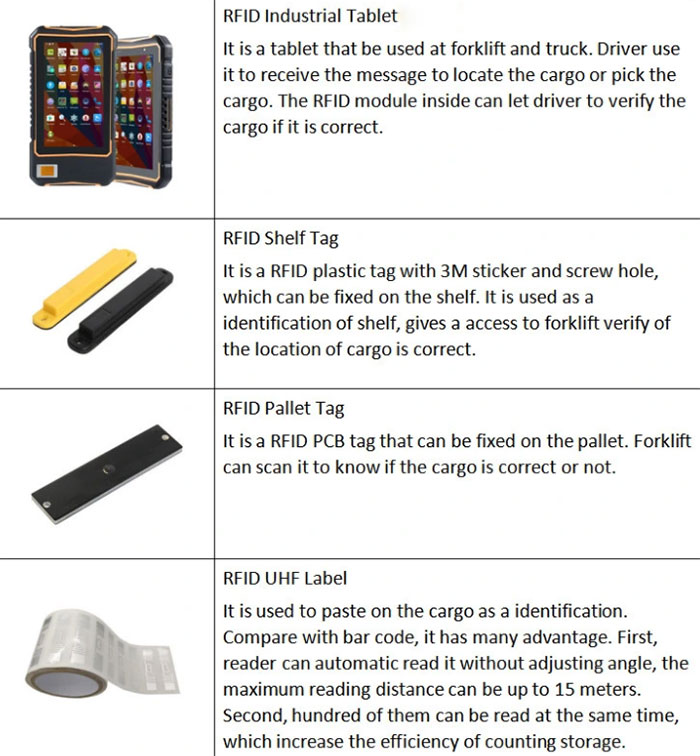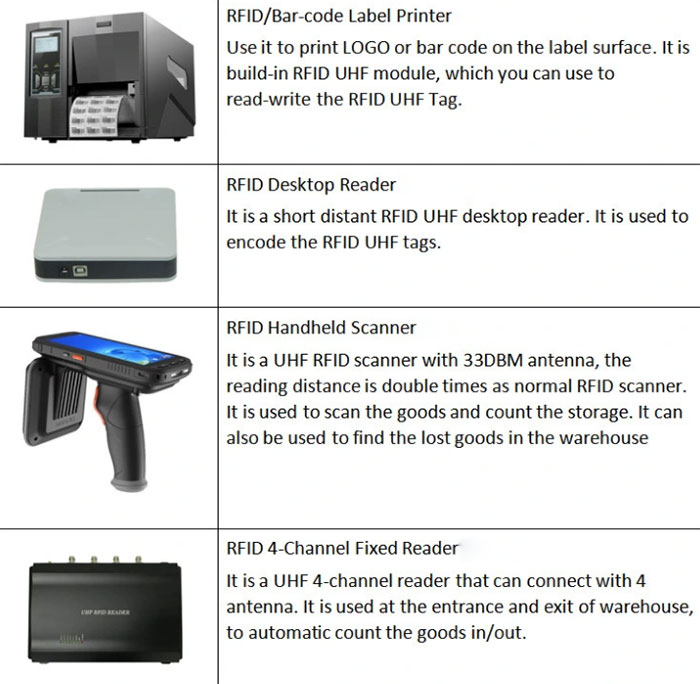Solution Introduction
A mature RFID inventory solution consists of several steps:
The first is the registration and storage of goods. At this time, you need to use an RFID printer device to print LOGO or bar code on the label surface, and at the same time correlate product information. It can also be operated with a desktop RFID Reader device if you do not need print content on the tag.
After the system registers the label, the back-end will automatically generate the product's inventory location and give the location information to the forklift staff in the warehouse.
When the truck driver sends the stocked goods to the warehouse, the RFID reader installed at the entrance of the warehouse can automatically read the goods information to prove that the goods have been put in the warehouse. At the same time, the forklift has received the storage information and placement location, so goods can be placed. The forklift will read the RFID tags on the shelves and pallets to determine whether the location is correct.
Warehouse staff can use RFID hand-held devices to move around in the warehouse to carry out inventory counts, which can avoid missed readings when the goods enter the warehouse. When the goods leave the warehouse, the forklift picks up the goods according to the instructions received, and the goods pass the RFID reader at the exit to prove that the goods have been out of the warehouse.
This is a complete RFID inventory management solution. This solution greatly reduces labor costs, improves management efficiency, and avoids losses caused by goods being dropped in the warehouse.
Hardware Solution:


Contact: Adam
Phone: +86 18205991243
E-mail: sale1@rfid-life.com
Add: No.987,Innovation Park,Huli District,Xiamen,China